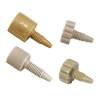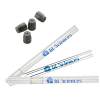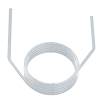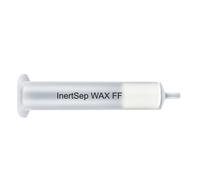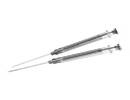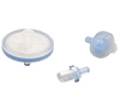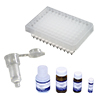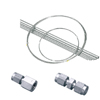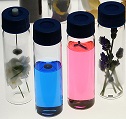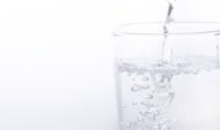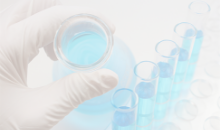Basics of Gas Chromatography
3-7 Discrimination
In-syringe elimination refers to the reduction of compositional change during GC analyses of mixed samples containing low to high boiling–point components. When a sample collected with a syringe is injected into a gas chromatograph, the low boiling–point components are more easily introduced to the column than the high boiling–point components. Consequently, the peaks are high in the first half and steadily diminish throughout the second half. Components with very high-boiling points that fail to enter the column will present no peaks.

time(min)
Sample Introduction

The amount of sample introduced through the injection port increases as the syringe plunger is lowered. After injection, any low boiling–point components remaining in the needle are vaporized by the heat of the injection port while the high boiling–point components remain in the needle.
Improvement Method
Discrimination can be improved by injection methods, such as on-column injection or temperature programmed vaporization that maintains the inlet at low temperature. In the split or splitless injection method, where the temperature at the injection port is always high, discrimination can be mitigated by high-speed injection using an autosampler or reduced by the following injection methods.
Air Sandwich Hot-Needle Method

In this method, air pinches the sample in the syringe.
Hot-Needle Process

The sample is aspirated, air is sucked in, and the needle is thoroughly heated at the injection port. The sample is then injected into the column.
Solvent Flush Method

The sample is aspirated and then trapped in the syringe with air. During injection, the aspirated solvent drains the residual material from the needle.


